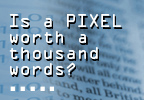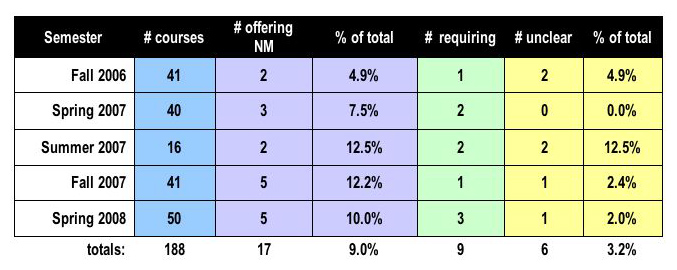



New media opportunities in ODU graduate English courses
The English Department offered 188 graduate level courses from Fall 2006 until Spring 2008. In analyzing nearly two-thirds of that total number of syllabi (and more than two-thirds of the syllabi offered in the Spring 2007, Fall 2007, and Spring 2008 semesters), I found that no more than five classes offered students an opportunity to produce new media scholarship to meet course requirements during the specified time period. That number represents nine percent of courses overall and a range of 7.5 to 12.5 percent of total courses offered each semester.

Interestingly, during the Spring and Summer of 2007 all or nearly all of the courses offering such an opportunity actually required new media composition. However, in Fall 2007 and Spring 2008, only about half the courses offering these options required digital composition. This lack of opprtunity is not surprising. In fact it mirrors findings of studies exploring other, non-text-based options (specifically in the area of visual rhetoric).
Eva Brumberger found in a survey of 32 business communiication educators that more than two-thirds dedicate less than 20 percent of their teaching time in undergraduate courses to visual communictaion with almost one-third dedicating less than 10 percent of their time. This is particularly troubling given that half of her respondents indicated between 10 percent and 30 percent of the work they assign requires visual communication with a significant number indicating that more than 50 percent of their assigned work is visual (2005).
New media opportunities • An unduplicated count • Unequal opportunities • Implications • Home